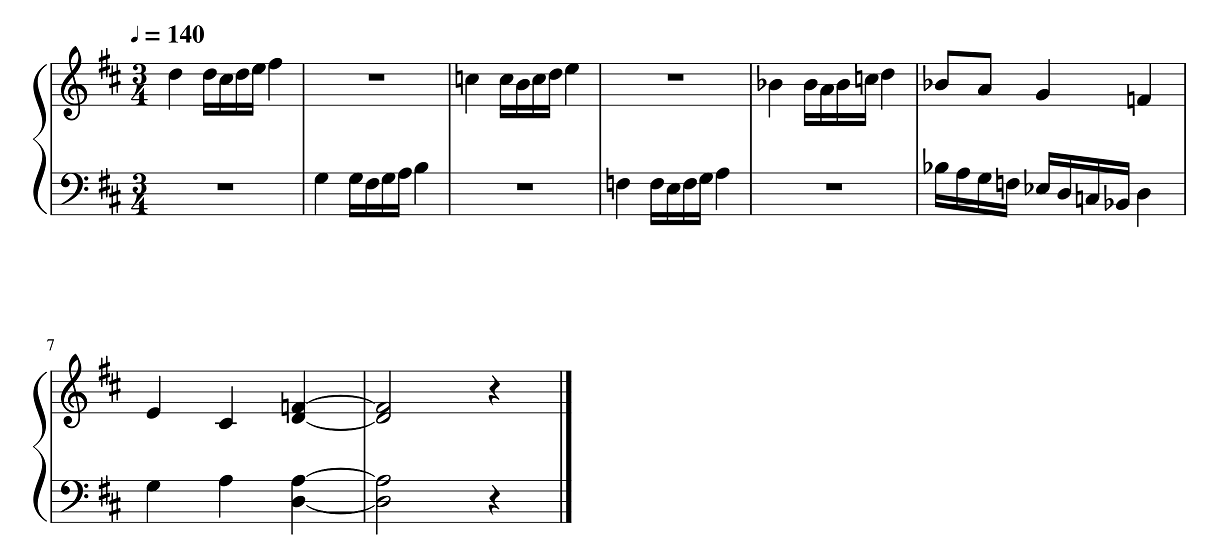I am composing a Scherzo in the key of D major and I have the first section of my Scherzo already written down. Now I'm into the second section of the Scherzo that precedes the Trio. And in this second section, I am wanting to modulate to D minor and end at least the repeat with a half cadence. I'm now thinking that this repeat would be a great place to have a first and second ending, where the first ending leads back to the modulation via a half cadence(I mean after all, the dominant is a chord that often leads to a modulatory passage) and the second ending concludes in D minor, the key of the Trio section of my Scherzo in D.
Now, I can think of a few ways to modulate from D major to D minor, some gradual, and others sudden.
Circle of Fifths Modulation
This is perhaps the most gradual of the modulations. However, I usually see this used when the motion is to a key that isn't parallel to the original key(so for example, a motion from C minor to Eb major might be acheived through the Circle of Fifths harmonic sequence). Here is a motive that shows up frequently in my Scherzo melody:
And here is what happens if I take that melodic motive and use the Circle of Fifths Modulation:
As you can see, I did it by using a literal subdominant chain. While this isn't usually what people are talking about when they say that the Circle of Fifths is used to modulate, this is a possible interpretation of that statement.
Pivot Chord Modulation
This is by far the most common form of modulation in Classical Music. But, I basically have to either stick to the dominant as my pivot or use some secondary chord as my pivot if I go this route(okay, so there is the diminished seventh possibility but I will mention this separately). If I use secondary chords, then C major becomes a possible pivot chord. However, for parallel modulations, I see this less frequently than for other keys, even those more distantly related. It isn't as gradual as the Circle of Fifths modulation I mentioned earlier, but it isn't as sudden as the other modulations I will mention.
Diminished Seventh as Pivot
So, even though this technically falls under Pivot Chord Modulation, I am mentioning it separately because a common usage of the diminished seventh is as the one and only pivot chord in a modulation from a major key to a minor key. This does multiple things that using a chord like C major just wouldn't do. Here are the things that make a Diminished Seventh Pivot more sudden of a modulation:
- The obvious, it brings that crunch of the overlapping tritones into what has otherwise been a consonant piece
- Diminished sevenths are very commonly used as a dominant substitute in minor keys, and so a diminished seventh without a preceding dominant brings in that minor key tendency already
- The diminished seventh is a bit ambiguous, and thus, even with the spelling, it isn't obvious at first where it wants to resolve, just that it wants to resolve somewhere.
All of these make the Diminished Seventh Pivot a more sudden modulation.
And then of course, there is the sudden switch with no sort of pivot whatsoever. But, that isn't what I am aiming for. I want it to sound like I am truly modulating to D minor.
Since I am aiming for a more humorous character to my Scherzo as well as a smooth transition from the half cadence back to the modulation upon the repeat of the second section of the Scherzo, does this mean that I should go the Circle of Fifths route for my modulation or what? Would my aim for it being in the Classical Style change anything as to what route I should go for my modulation?


